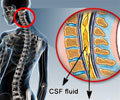The structural relationships between the brain's network and the physical and mental health of patients with Functional neurological disorder (FND) has been discovered.

TOP INSIGHT
The severity of symptoms in neuropsychiatric disorder is linked with structural changes within the brain network.
"While this is a treatable condition, many patients remain symptomatic for years, and the prognosis varies from patient to patient. Advancing our understanding the pathophysiology of FND is the first step in beginning to develop better treatments."
One of the most common conditions bringing patients to neurologists, FND involves a constellation of neurologic symptoms including weakness, tremors, walking difficulties, convulsions, pain and fatigue not explained by traditional neurologic diagnoses.
This condition has also been called conversion disorder, reflecting one theory that patients were converting emotional distress into physical symptoms, but Perez notes that this now appears to be an oversimplified view of a complex neuropsychiatric condition.
The research team hopes that advancing the neurobiological understanding of FND will increase awareness and decrease the stigma - including skepticism about the reality of patients' symptoms often associated with this condition.
The current study is one of the first to examine structural relationships between components of the salience network and the physical and mental health of patients with FND.
While there were no whole-brain structural differences between FND patients and healthy controls, patients reporting the greatest levels of physical impairment were found to have decreased volume in the left anterior insula, while those reporting the greatest mental health impairments and highest anxiety levels had increased volume within the amygdala.
"The association among FND patients between the severity of impairments in physical functioning and reduced left anterior insular volume is intriguing, given that the anterior insula has been implicated in self- and emotional awareness," says Perez, who is a dual trained neurologist-psychiatrist and an assistant professor of Neurology at Harvard Medical School.
He adds, "Little attention has been given to FND to date, which is striking given its prevalence and the health care expenses driven by patients suffering with FND. I hope that advancing the neurobiological understanding of FND will help decrease the stigma often associated with this condition and increase public awareness of the unmet needs of this patient population."
Source-Eurekalert
 MEDINDIA
MEDINDIA




 Email
Email










